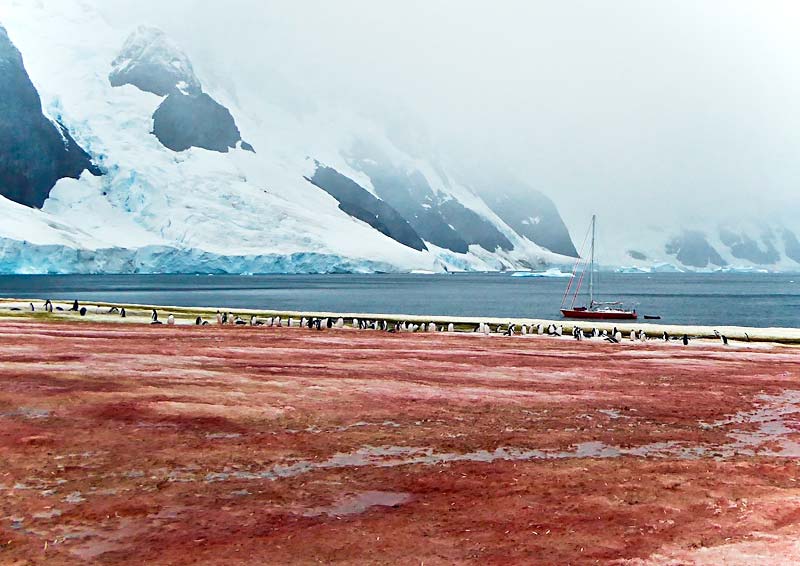
Red and green algae that grow on snow in the Antarctic Peninsula (AP) cause significant extra snowmelt on par with melt from dust on snow in the Rocky Mountains, according to a first-of-its-kind scientific research study led by Alia Khan, affiliate research scientist at the National Snow and Ice Data Center (NSIDC) and assistant professor at Western Washington University.
Algal blooms are likely to increase in Antarctica as the planet continues to warm, which will further exacerbate seasonal snowmelt and contribute to the expansion of ice-free areas in the AP region. This could have serious impacts on regional climate, snow and ice melt, freshwater availability and ecosystems, yet is not accounted for in current global climate models. Results of the research were published on January 13, 2021, in the European Geosciences Union’s The Cryosphere.
“Warming along the Antarctic Peninsula is causing drastic changes in snow and ice melt, as well as ecosystem responses,” said Khan. “We are seeing these algae blooms spread across wide areas along the coast. The blooms can be so intense and dark, like wearing a dark T-shirt on a sunny day, that they warm up the surface and cause more melting. The warming is likely expanding and strengthening the snow algae bloom season, which could continue to increase in this region of Antarctica as the climate continues to warm.”
The researchers investigated the impacts of red and green algae on albedo, which is how much light the surface of the snow reflects back to space, and radiative forcing, which is how much energy the surface absorbs. Darker surfaces decrease albedo and increase radiative forcing, and positive radiative forcing causes the planet to warm. This is the first time that radiative forcing effects from algae have been estimated in the AP region. The scientists conducted this research by taking ground-based spectral albedo measurements of red and green snow algae at three sites in January 2018 and then modeled the radiative forcing using historical multi-year measurements of solar radiation at Palmer Station in Antarctica. Two of the ground sites were on King George Island, north of Palmer Station, and one was on Nelson Island. Because algal blooms are linked to animal waste, which produces the nutrients that the algae need to grow, the researchers chose sites that seals, penguins and other birds frequent.
When compared with clean snow, the scientists found that green algae patches reduce snow albedo by 40 percent, and red algae patches reduce albedo by 20 percent. Green snow algae contain more chlorophyll than red snow algae and therefore absorb more solar radiation, reducing albedo by a greater amount for the same concentration of algae in the snow. As a result, radiative forcing averages are twice as high for green patches compared with red patches. During peak growing season, in austral summer, the increase in radiative forcing is about 26 watts per square meter, and about 13 watts per square meters for red algae. These amounts of radiative forcing are comparable to those caused by dust on snow in the mid-latitudes, such as in the Rocky Mountains, which advances snowmelt there. In the AP, algal blooms result in about 3,700 cubic meters, or over a million gallons of additional snow melt per year.
read more https://nsidc.org/news/newsroom/red-and-green-snow-algae-increase-snowmelt-antarctic-peninsula









